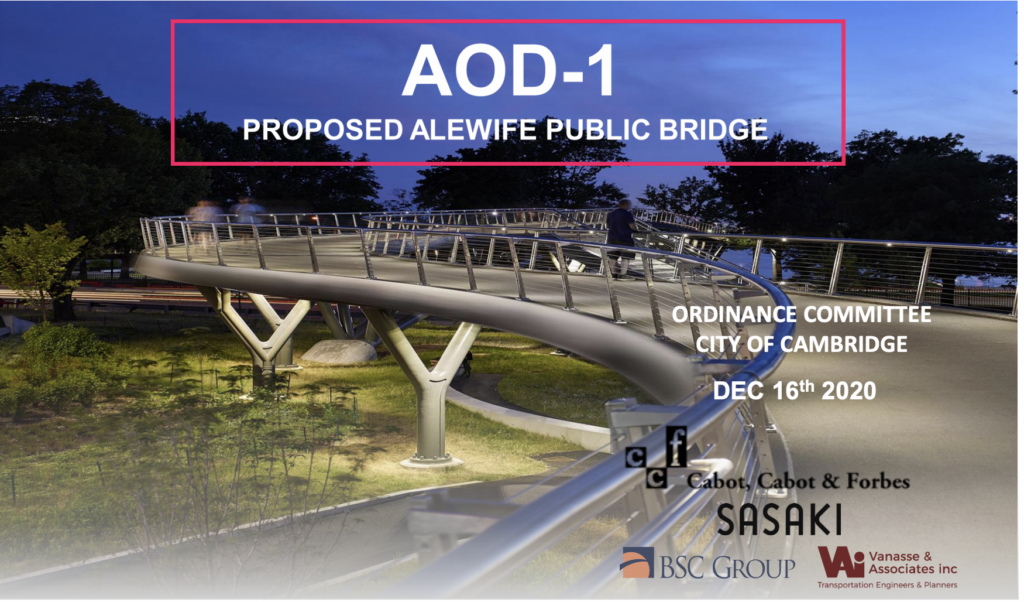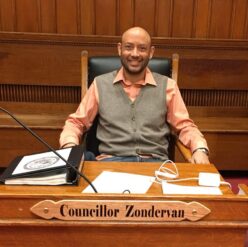Here are 5 reasons why Councillor Zondervan is not ready to move ahead with the proposed upzoning in the Alewife Quadrangle:
1. There is no guarantee of a bridge.
CC&F talks big about building a bridge across the commuter rail tracks, but this language allows them to get out of that by making a financial payment. Without a guarantee that the bridge will be built, it is sometimes hard to understand why we are spending so much time on this proposal. The developer hasn’t even secured key permits and easements with the MBTA, adding significant uncertainty. Even if this bridge were to get built, it isn’t in an ideal location- it is sited to primarily serve the developer’s tenants, rather than the public interest.
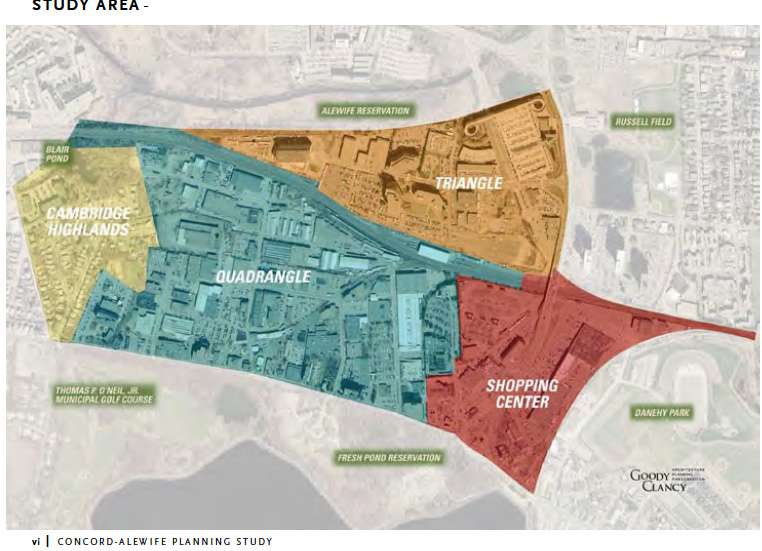
2. Too much parking.
The proposed 85-foot tall above ground parking garage is simply unacceptable from a climate perspective. Traffic is already famously bad in the area and we need to reduce the number of cars that come into our city. The developer’s insistence on a 700+ car garage makes connectivity feel like less of a priority. I asked them to build more housing instead of the massive garage, but they don’t seem to be willing to move in that direction. I appreciate their commitment to rooftop solar, but that does not make the parking structure acceptable.
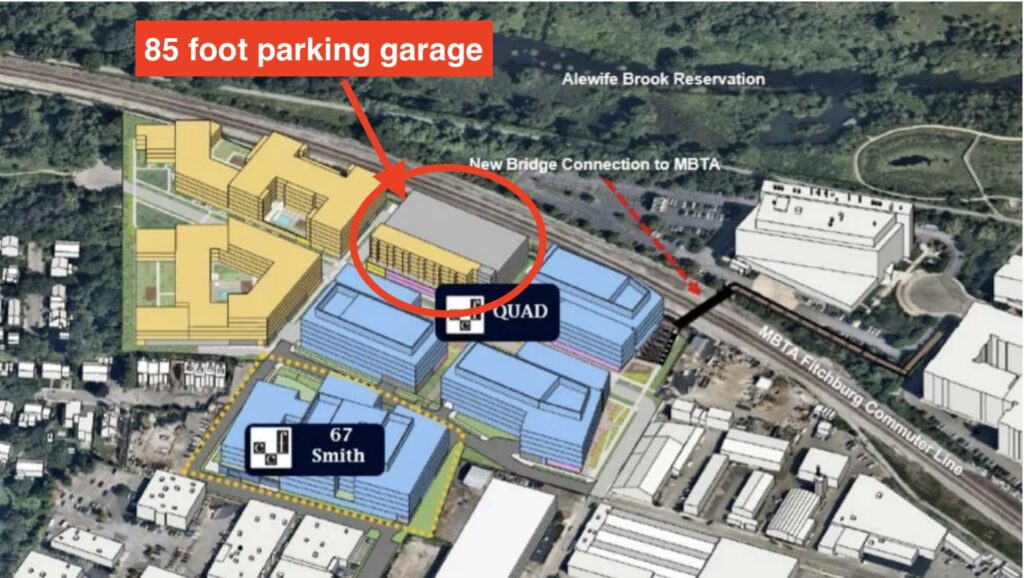
3. Subverted process.
The developer went to the nearby rock gym to collect signatures of registered voters in order to submit the upzoning as a citizens’ petition instead of having to engage in contract zoning with the council. It is unclear if those who signed were even aware of what they were signing since none of them have shown up to our meetings, which is highly unusual. Why isn’t this a PUD? Through this trick, the developer is able to offer community benefits based on just ⅔ of the land being upzoned, and if the developer were to buy the adjoining parcels they would get the upzoning without having to provide any additional benefit.
4. Cherrypicking the Alewife District Plan.
Ironically, the city’s Envision Alewife process led to a near consensus on preserving the light industrial nature of this area. But the market pressure is all about building high-end laboratory/office space, because that commands the highest rents. The CC&F proposal pretends to honor the light-industrial buildings envisioned in Alewife, but is mostly focused on collecting the high rents of laboratory/office space. The proposal does not reduce dependency on automobile traffic as Envision calls for. CC&F has not grappled with questions around public amenities or the open space network that Envision calls for, to reduce heat and flooding impacts of climate change.
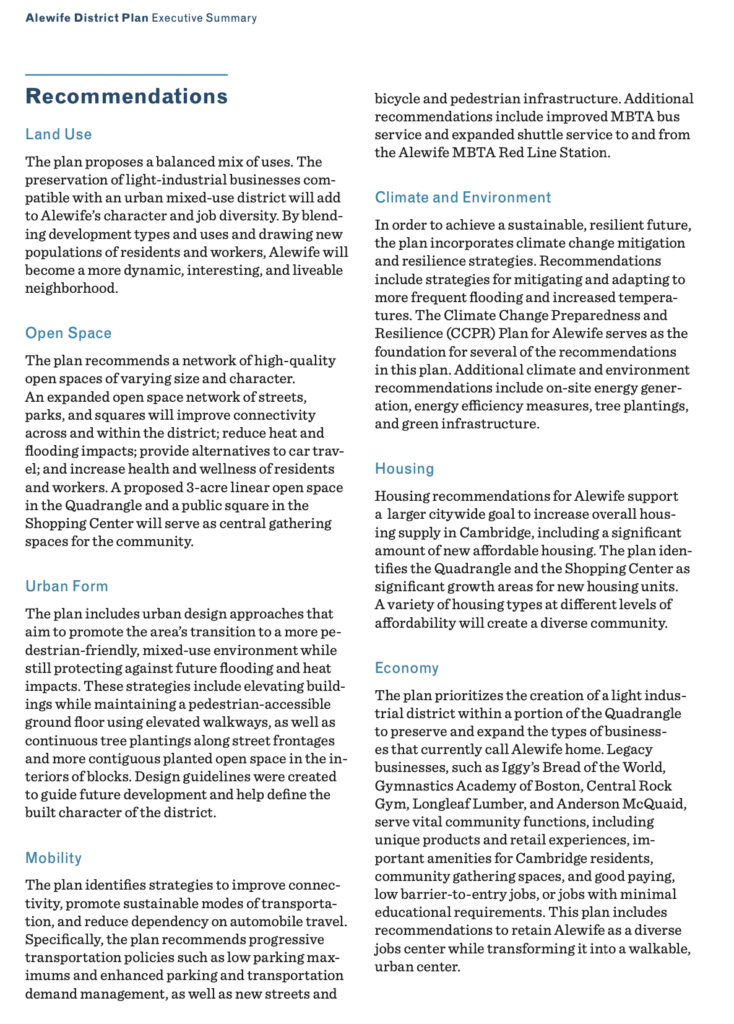
5. A worthless financial analysis.
The analysis we were initially presented with showed a -$3M net value for the proposed upzoning, which didn’t make any sense. That value is the assumed increased value of the upzoning minus the assumed costs to the developer including community benefits. It defies belief that the developer would go through the trouble of filing this petition four times at a net loss compared to what they could do building as-of-right. CDD said the initial analysis was done without the commitment letter, so there was no way to actually know the true costs of the community benefits to the developer. We received the letter on Monday (2/16) and it shows a much lower estimated cost for the bridge by millions of dollars. CDD will have to redo their analysis.
